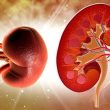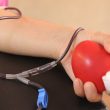Cardiac Artery Bypass Graft Surgery has been shown more effective than percutaneous coronary intervention (basically because it renders lower revascularization rate) in patients with severe left main bifurcation lesions receiving 1st generation drug eluting stents. This is why the 2014 American guidelines recommend CABG for most patients. But the EXCEL and the NOBLE trials brought back hope to...
Ischemic and Bleeding Risk After Primary Angioplasty
Patients with ST-segment elevation myocardial infarction who undergo primary angioplasty are at high risk for both ischemic and bleeding events, which affect significantly both morbidity and mortality. An optimal selection of antithrombotic therapies in terms of strength and duration must take into account the timing for the procedure, since the risk for these complications may...
Angioplasty Complexity May Define the Duration of Dual Antiplatelet Therapy
The DAPT study concluded that continued thienopyridine plus aspirin beyond a year after coronary angioplasty is associated with a decrease in the rate of stent thrombosis and major cardiovascular events. In contrast, there is a significant increase in moderate to severe bleeding when compared with continued aspirin alone. Based on the outcomes of this and...
PRESERVE: IV Bicarbonate and Oral N-Acetylcysteine Do Not Prevent Contrast-Associated Acute Kidney Injury
Use of IV bicarbonate instead of saline and administration of oral N-acetylcysteine are not effective strategies for preventing contrast-associated acute kidney injury in patients with chronic kidney disease undergoing angiography, according to the randomized PRESERVE trial that was presented at the AHA 2017 Scientific Sessions and published simultaneously in the New England Journal of Medicine...
Though on the Rise, the Transradial Approach to Primary PCI Remains Underused
There is evidence to support the use of the transradial approach to coronary angioplasty. Several randomized studies have shown reduced bleeding and vascular complications when adopted, compared against patients treated with the femoral approach. There are also studies and meta-analysis suggesting that, in the context of primary PCI, the benefit would be even bigger, with significant events...
The End of Aspirin for Anticoagulated Patients Undergoing PCI
The discussion about the best anti-thrombotic strategy for patients with atrial fibrillation undergoing PCI seemed never-ending until the RE-DUAL PCI trial was published in the New England Journal of Medicine (NEJM). This study has arrived to simplify the tough choice between the risk of a thrombotic event vs. the risk of bleeding with a simpler scheme, without...
TCT 2017 | SENIOR: DES with a Bioresorbable Polymer and Short Dual Antiplatelet Therapy in Elderly Patients
Courtesy of the SBHCI. This study sought to assess the safety and efficacy of an everolimus-eluting stent with a biodegradable polymer (SYNERGY II) vs. a conventional stent (REBEL) in patients >75 years old with short duration of dual antiplatelet therapy. Before randomization, investigators recorded the planned duration of dual antiplatelet therapy (1 month for stable patients and 6 months...
TCT 2017 | REDUCE: 3 vs 12 Months of Dual Antiplatelet Therapy with the New Combo DES
Courtesy of SBHCI. This new device has, on one hand, an abluminal sirolimus coating, and on the other hand, a luminal CD34 antibody coating for EPC capturing, to potentially accelerate post-PCI reendothelization. Between 2014 and 2016, the study included 1496 patients undergoing acute coronary syndrome (ACS), receiving the new COMBO stent. These patients were randomized...
ABSORB III: after 3 Years, the Bioresorbable Scaffold is Still a Disappointment
Courtesy of the SBHCI. The 3-year outcomes of the ABSORB III trial, which randomized 2008 patients 2:1 to an everolimus eluting bioresorbable scaffold (1322 patients) vs. a metallic stent with permanent everolimus eluting polymer (686 patients), was published with low profile and great disappointment. Primary end-point, a composite of target vessel failure, occurred in 13.4% of patients receiving...
Absorb IV: Bioresorbable Scaffolds with an Optimized Implantation Technique
Courtesy of the SBHCI. The Absorb IV trial randomized 2604 patients in a 1:1 ratio to receive an Absorb everolimus-eluting bioresorbable scaffold or a Xience stent. With the aim of minimizing the problems observed in previous studies, the Absorb IV protocol excluded small caliber (<2.5 mm) vessels and included mandatory aggressive pre-dilation followed by non-complacent balloon post-dilation. Patients could...









